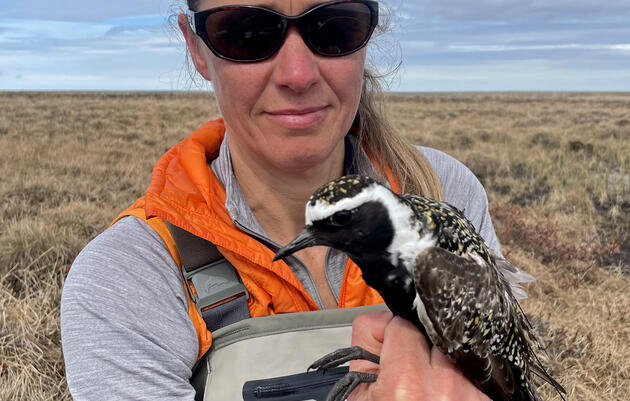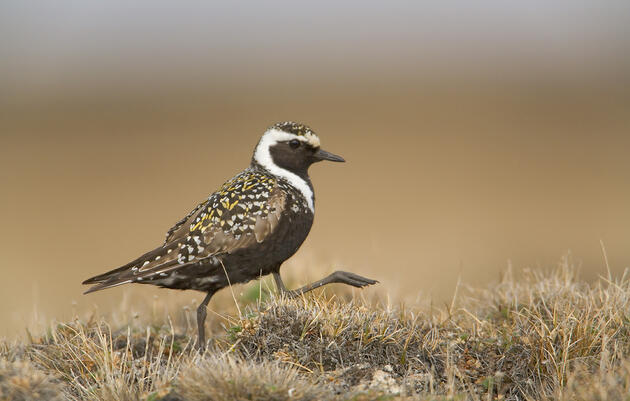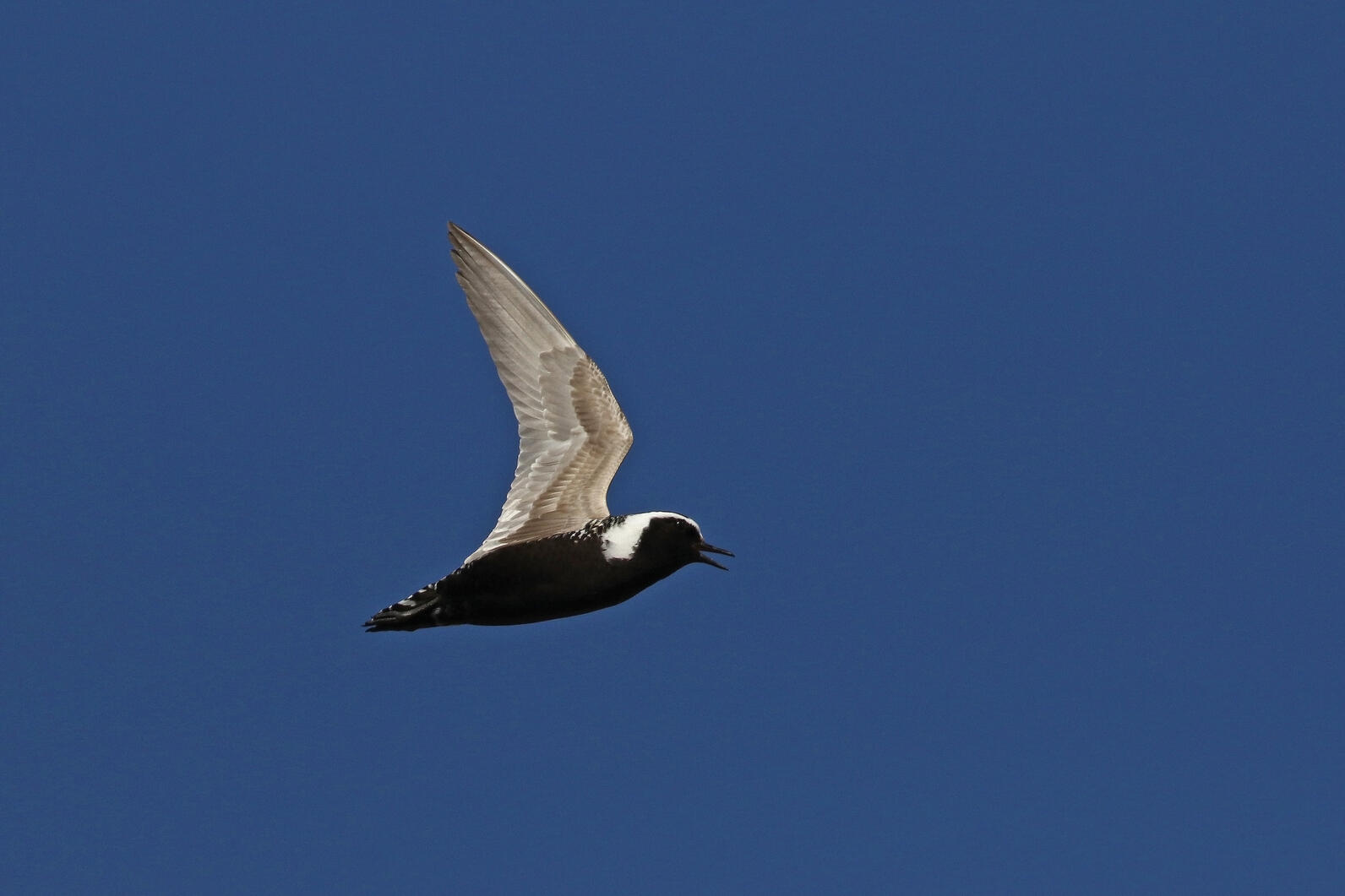
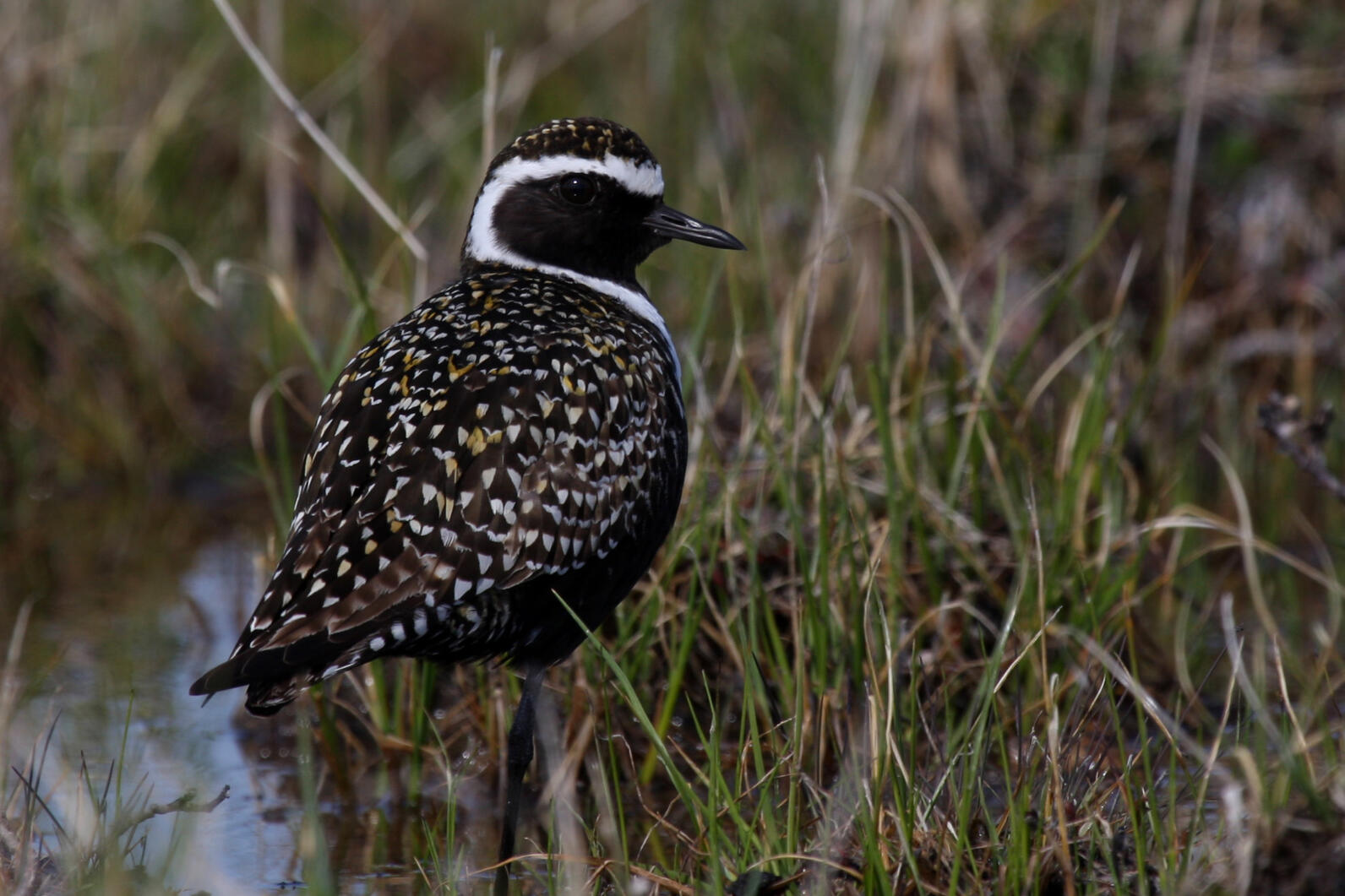
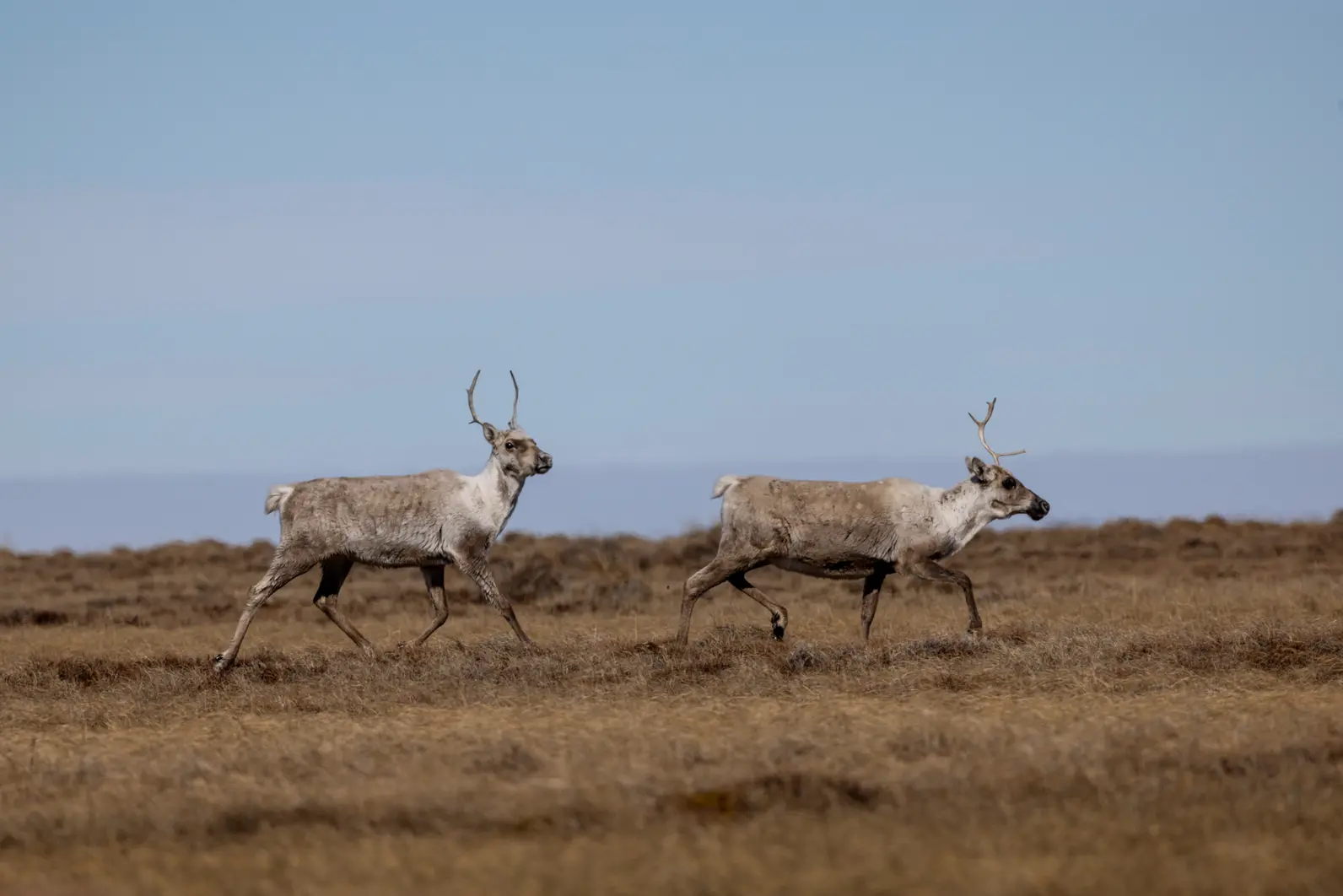
The village is some distance from the Teshepuk Lake Special Use Area—one of five special use areas in the National Petroleum Reserve–Alaska—where eight American Golden Plovers were equipped with GPS tracking devices so scientists and the public may follow their southbound migrations (see blog posts with River Gates and Rick Lanctot). However, Ahtuangaruak says the special area is special to them as well— especially the northeast corner where historic caribou herds are found.
“For us, it's about the spring migration coming into this area, and the calves being born and imprinting into this area,” she says, explaining how the best time for harvesting caribou is when they migrate back to the Nuiqsut. “That's when the caribou are in their prime,” she says, “and it's really important for us to be able to get out and harvest wild caribou while they’re in good shape.”
Again, it all comes down to the importance of migration. That goes for caribou, other Alaska wildlife species, and—to bring it home—birds.
“In this region, we have 190 birds that go through every state and every continent in our world. The concentration of birds in our part of this area of the Arctic is not the same as other areas of the Arctic,” she says. “So, each of us working to protect our lands and waters as our animals move through this very important migratory route is so very important to the health, life, and safety of our people, our communities, and our future generations.”




